Black and Hispanic Workers With Highest Income Face More Debt, Work-Life Balance Challenges, Than Their Similarly Paid White Colleagues
WASHINGTON – November 18, 2021 – A new report based on the annual “Workplace Wellness Survey” (WWS), conducted by the Employee Benefit Research Institute and Greenwald Research finds that Black and Hispanic workers are more likely to be financially challenged by debt and less able to handle an emergency or sudden large expense than their White counterparts. Moreover, while evaluations of work-life balance improve with income, Black and Hispanic workers in households earning $75,000 per year or more are less content with the work-life balance at their organizations than their White counterparts and are less likely than White workers to give high ratings to their employers’ efforts to improve various aspects of their wellbeing.
The WWS was conducted for its second year in 2021 to measure attitudes of American workers about issues surrounding workplace benefits. The 2021 WWS included an oversample of Black and Hispanic workers in order to better understand the unique workplace wellness needs of such workers and to explore and identify potential differences in attitudes, experiences, and behaviors related to workplace wellness. Given economic differences in these segments of workers, this paper takes a closer look at the combination of race/ethnicity and income.
The Issue Brief, “Making Workplace Wellness Programs Fit the Needs of Black and Hispanic Workers: Findings from the 2021 Workplace Wellness Survey”, discovers when race/ethnicity differences are examined by income, most reported differences between Black, Hispanic, and White workers are minimal at lower-income levels when it comes to perceptions of debt, stress about financial future, confidence regarding employee benefits decisions, work-life balance, keeping a good balance between work and caregiving responsibilities, and employers’ efforts to improve various aspects of worker well-being.
“Our latest research raises the question — what can employers do to address and improve the financial well-being and work-life balance of workers, and of Black and Hispanic workers in particular? Our findings show that flexibility to use paid time off and more benefits and resources to help with emotional well-being/mental health would be the most valuable improvements employers could make to employee benefits programs and offerings,” said Lisa Greenwald, CEO, Greenwald Research, and co-author of the report. “In the future, employers may seek to close the gap between awareness and participation in wellness programs in order to improve financial and emotional stress, increase satisfaction with employee benefits, and raise overall job satisfaction. This could include communicating and delivering these programs differently, rethinking the approach or format, and focusing on building trust.”
More Income, Greater Disparities
There are some profound differences between the experience of Black and Hispanic high-income workers with $75,000 or more in household income, and their White counterparts. Black and Hispanic workers are more likely to consider debt to be a problem for their household than White workers. These Black and Hispanic workers are also less likely than White workers to agree that they have enough savings to handle an emergency or sudden large expense and report less preparedness to handle a variety of financial complications than White workers, including an unexpected expense of $500 or $5,000.
Black and Hispanic workers are also less likely to be satisfied with various aspects of their job. The disparities in satisfaction correlate with differences in workers’ confidence to make informed decisions about employee benefits. These differences in satisfaction by race/ethnicity are most pronounced within higher-income groups.
Higher-income Black and Hispanic workers are also less likely than White workers to give top ratings to their employers’ efforts to improve various aspects of worker well-being across physical, emotional/mental health, and financial dimensions. While workers overall rate work-life balance positively, higher-income Black and Hispanic workers are overall less likely than White workers to say that work-life balance at their company is excellent.
“Overall, the findings highlight the need for employers to do a better job of tailoring workplace wellness programs to fit the specific needs of workers at different income levels and of different racial/ethnic backgrounds,” said Paul Fronstin, EBRI Director of the Health Research and Education Program, and co-author of the report. “At lower to moderate-income levels, financial challenges are pervasive. However, we should challenge ourselves to better understand why Black and Hispanic workers at the higher-income level are having quite different experiences than White workers with similar incomes. By taking a more nuanced approach, employers have an opportunity to build program offerings and devise communication strategies that more effectively support a diverse workforce. While these employer-sponsored programs will not completely resolve the racial/ethnic wealth gap, they may help level the playing field over time.”
“Making Workplace Wellness Programs Fit the Needs of Black and Hispanic Workers: Findings from the 2021 Workplace Wellness Survey” is available at ebri.org/bh. The survey was underwritten by AARP, Cigna, Fidelity, Lincoln Financial, Mercer, Morgan Stanley, National Rural Electric Cooperative Association (NRECA), Voya Financial, Unum, and Wells Fargo.
About the Workplace Wellness Survey (WWS):
The Workplace Wellness Survey (WWS) is conducted annually by the Employee Benefit Research Institute (EBRI) and Greenwald Research. The 2021 survey of 2,016 American workers was conducted online July 7 through July 27, 2021. All respondents are ages 21-64. The survey is comprised of a national sample of 1,000 workers and an oversample of 503 completed surveys among Black workers and 513 completed surveys among Hispanic workers, bringing the totals to 587 Black respondents and 662 Hispanic respondents.
Data is weighted by age, race, gender, and income. The margin of error at the 95 percent confidence level for the total sample of current workers in this study (n=2,016) is approximately plus or minus 2.2 percentage points.
Please note percentages in the figures may not total to 100 percent due to rounding and/or missing categories. Any trend changes or differences in subgroups noted in the text are statistically significant; if no trend changes are noted, there are no significant differences. Income differences noted in the text are simple correlations within the same income group. Only some of these differences can be found in the Figures.
About Greenwald Research:
Greenwald Research is a leading, independent research firm that has been specializing in retirement, employee benefits, and health care research for over 35 years. For more information, go to www.greenwaldresearch.com.
Lisa Greenwald
CEO
Greenwald Research
lisagreenwald@greenwaldresearch.com
202-686-2510
About EBRI:
The Employee Benefit Research Institute is a private, nonpartisan, nonprofit research institute based in Washington, DC, that focuses on health, savings, retirement, and economic security issues. EBRI conducts objective research and education to inform plan design and public policy, does not lobby and does not take policy positions. The work of EBRI is made possible by funding from its members and sponsors, which include a broad range of public, private, for-profit and nonprofit organizations. For more information go to www.ebri.org.
Betsy Jaffe
Director, Marketing and Public Relations
Employee Benefit Research Institute
press-media@ebri.org
202.775.6347








